阐述下一代电子游戏设计的变化趋势
作者:Adrian Chmielarz
多亏了各种新一代硬件,我们设计游戏的方式被改变了。倒不一定是因为我们想改变,而只是因为我们不得不改变。
也多亏了我称之为“模拟-玩具失调”这个小恶魔。
想像你在听一首你喜欢的歌。一般来说,音响设备越好,你听这首歌的感觉就越好。所以当你使用高级音响时,歌曲中的各种声音将变得格外清晰,你甚至可以辨认出其中的乐器、歌词中的每一个字。歌还是那首歌,但你感觉更动听了。
当你听到的音乐正是创作者听到的样子,你就抵达音乐的天堂了。
然而,游戏就不是这么回事了。
当游戏机制仍然是那个游戏机制,而其他一切——声音、画面、剧情等都变得更好了,那么游戏就完蛋了。
我称这种情况为“模拟-玩具失调”。
(不是因为没有更好的词,而是因为我询问了别人的意见)
我最近完成了两款大游戏:《生化奇兵:无限》和《古墓丽影》。我很惊讶,这两款游戏的失调方面居然让我这么烦恼。就这点而言,《古墓丽影》还好一些,但仍然被失调问题拖了后腿。
“真的吗?Lara,老遗忘神庙的弹药包没有让你觉得奇怪?”
“真的吗?Lara,当你清扫残余敌人时,你的皮肤居然能防弹了?”
“真的吗?Lara,把东西放在火上马上就能销毁了?”
我非常喜欢这款游戏,认为它是今年第一个季度的最佳游戏——但不完美的部分确实让我有点闹心。
我抱怨这一点是因为我最近给脑袋重新布线时,当我玩其他人的游戏时,我不能禁用游戏设计师模式。
但之后一个朋友推荐我玩《乐高积木:指环王》。
我不太确定要不要玩,但他向我保证这款游戏的3D效果很棒,所以我就试玩了一下。
是的,这款游戏做成3D确实很不错,但我注意到另外两个重点:
1、游戏的模拟性很差。
2、游戏非常有趣、吸引人。
我不仅注意到游戏的模拟性很差,我甚至喜欢这一点了。我不仅沉浸于游戏世界,而且笑着用我的魔法小铲让植物复活,笑着收集金币。
我再强调一遍:我居然笑着收集金币!可是我最讨厌的就是收集金币了。
现在,我所谓的“模拟-玩具失调”概念应该很清楚了:当游戏越接近玩具,我们越喜欢它的失真;当游戏越接近现实,我们越讨厌它的失真。
我不停地提“模拟性”、“玩具”、“失真”,到底说什么?
假设,动作冒险游戏终极形态就是完美的虚拟现实,以假乱真,就像《骇客帝国》,这就是我所谓的“模拟”。我们把自己放进一个装置里,除了我们知道它是假的,一切都像真实的,似乎我们就生存在另一个时空中。
而“玩具”则是相反的:老式游戏没有任何能与现实相混淆的元素,无论是在玩法上还是在表现形式上。玩具之于模拟,就像魔方游戏之于《骇客帝国》。
但是,“骇客帝国”的实现不会很久,对吧?
所以在它成真以前,我们需要隐喻(游戏邦注:这个概念借用了文学作品中的修辞手段,这里是指将现实与游戏进行隐蔽的比较和投射)所有艺术形式都有它自己的一套隐喻,游戏也不例外。
例如,在电子游戏中,用死亡隐喻失败;用屏幕中间的准星隐喻枪的瞄准器;用屏幕变红隐喻受伤。
我们使用游戏隐喻将生活翻译成电子游戏的语言。这是一个大论题,一篇文章肯定解释不清楚,所以我只专注于单人动作冒险游戏——这类游戏给玩家提供了在虚拟现实中逃避现实的冒险体验。
游戏隐喻可能有不同的抽象程度:比较明显的隐喻如,用游戏中的精力值代表真人的体力;比较不明显的隐喻如,用生命值恢复表示勇气、希望、动力或意志恢复等。
所以,我说的“模拟性”是指将现实转化为游戏隐喻的最终效果。注意,这与游戏机制是不同的。比如,在射击游戏中,不必上厕所就不是游戏机制,而是对多乐趣少麻烦的生活的一种隐喻。所以事实上,游戏机制只是我们将生活翻译成游戏时使用的字典中的一部分。
根据以上解释,模拟-玩具失调的完整解释应该是:游戏隐喻越抽象,而游戏的其他部分越逼真,我们的游戏体验就越差。
在人类语言中呢?
如果你想突出游戏的玩具性?那么就让它保持一致的抽象性或反模拟。把你的角色做成乐高积木(如乐高游戏系列);或者使用类似于油画的画面风格(如《时空幻境》或《魔幻堡垒》);又或者采用象素画风格(如《Kentucky Route Zero》)。
但如果你想让人们接受你的次世代高科技动作冒险游戏呢?除非你能非常合理地解释为什么能使用某种武器,为什么能恢复生命,为什么能写声音日志。毕竟,很难让人相信,有人会把自己最隐秘的时刻记录到30份相同的录音机中,然后随便丢在各个地方。这样的游戏隐喻太抽象了。
老式游戏隐喻正在死亡,我们急需新的隐喻字典。
在这一代游戏之后,人们开始注意到模拟-玩具失调。Nathan Drake(游戏邦注:《神秘海域:德雷克船长的宝藏》的男主角)是屠杀了许多人的刽子手吗?为什么在Columbia除了我就没有其他人使用精力?当只有一小排齿轮可以杀死上千只Locust的时候,Serra怎么不行了?
我们用逼真的脸部动画、像素着色器和玩家喜爱的角色吸引玩家的兴趣,让玩家彻夜失眠。下一代软件、硬件技术与最佳工作室的高超技术相给合,绝对不允许玩家在游戏时昏昏欲睡。
如果我们不能想出全新的或者至少大大改进的游戏隐喻,那么我们的新一代游戏狂想曲就会像在酒吧听的摇滚乐非常棒,但回家用自己的高保真音响播放时,歌词却显得非常滑稽可笑,就好像Justin Bieber在谈论Anne Frank。
是时候了。
这个过程会非常非常艰难。在我们有所突破以前,我们将有一番痛苦的挣扎。我们确实不知所措,就像在拍电影时不知道怎么处理声音。
但痛苦总会过去的,必须过去。等到下一代技术成熟,我们的游戏会越来越好——更感人的剧情、更精美的画面、更动听的声音,最终模糊游戏和故事之间的界线。但如果我们的隐喻设计跟不上,游戏就会完蛋。
新一代的游戏设计,无论我们喜欢与否,必将来临。(本文为游戏邦/gamerboom.com编译,拒绝任何不保留版权的转载,如需转载请联系:游戏邦)
Why the Next-Generation Will Change Games Forever
by Adrian Chmielarz
Thanks to the next-gen hardware of all kinds, we will change the way we design games. Not necessarily because we will want to, but simply because we will have to.
All thanks to a little devil I call sim-toy dissonance.
Imagine a song you love. The better the sound system you listen to the song on, the more pleasure you can get from listening to the song. Suddenly the song opens up, the bass is meatier, and you can hear the extra instruments or every word of the lyrics. It’s still the same song, but better.
When you can hear it exactly the way its creator heard it, it’s a sonic nirvana.
Yeah, not so much with games.
When the game mechanics (the song) stay the same, but everything else – audio, visuals, story-telling, etc. (the fidelity of the song) – gets better, the game suffers.
I call it the sim-toy dissonance. BECAUSE I CAN.
(Not that there cannot be a better term. I did ask around:)
I have finished two big games lately: Bioshock Infinite and Tomb Raider. I was surprised how much I was bothered by the gaminess aspect of these games. From that perspective, Tomb Raider was a much better experience, but still, it was not free of the gaminess pollution.
“Really, Lara? Ammo packs in old, forgotten temples don’t weird you out?”
“Really, Lara? Your skin turns bullet-proof when you’re executing finishers on barely alive enemies?”
“Really, Lara? Setting things on fire annihilates them in a manner of second?”
I enjoyed the game a lot, and to me it’s the best game of this year’s first quarter – but the gaminess did bother me a little.
I just blamed it on the fact I’ve recently got a brain rewiring, and that I cannot disable the game designer mode when I play the games of others – and I moved on.
But then a friend recommended that I played LEGO: Lord of the Rings.
I wasn’t quite sure about the idea, but he promised me it looked incredible in 3D, so I went for it.
Yes, it does look glorious in 3D, but I’ve noticed two much more important things:
1. The game is gamey like hell.
2. The game is deeply fun, engaging, immersive.
Not only I could not care less that the game was gamey, I have embraced it. I was both immersed and engaged, but I also giggled bringing plants to life with my magic little shovel, and felt immense pleasure smashing shit and collecting coins.
Let me run this by you again. I felt pleasure collecting coins. As you maybe know, I hate collecting coins.
I assume my “sim-toy dissonance” becomes clearer now. The more the game is a toy, the more we enjoy its gaminess. The more the game is a sim, the less we enjoy its gaminess.
I keep throwing “sim”, “toy”, “gamey” and “gaminess” around. What the hell?
I assume that the ultimate form of action-adventure gaming is a perfect VR simulation. Like in Matrix, just, you know, not evil. This is what I call a “sim”. We plug ourselves into a device, and other than the fact we know it’s all not real, it all feels real, like we’re living a different, more exciting life.
The “toy” is the opposite of that: an old school game that no element of which can be confused with a VR simulation, neither in gameplay nor in presentation. Toy is to sim what Rubik’s Cube is to Matrix.
But hey, Matrix is not going to happen anyway for a long, long time, right?
So until that happens, we need metaphors. Every form of art uses its own set of metaphors, and gaming is no different.
For example, a death in a video game is a game metaphor for a setback. The crosshair in the middle of the screen is a game metaphor for a gunsight. Screen going red is a game metaphor for being wounded.
We use game metaphors to translate life to the language of video games. This is such a vast topic, that one more time let me say that on this here blog I am focusing exclusively on single player action-adventures, the point of which is an escapist experience of adventuring in a different reality.
Now, game metaphors can be a little bit abstract (stamina meter in games is a pretty good metaphor for a real life stamina), or heavily abstract (regenerating health in a video game can be considered a symbol of courage, hope, drive or willpower).
So by “gamey” or “gaminess” I mean game metaphors that are the result of turning life into a video game. Note that this is not exactly the same thing as game mechanics. Not having to take a leak every now and then in a shooter is not game mechanics, it’s a game metaphor for a more exciting, less cumbersome life. So game mechanics are actually just a part of the dictionary we use when translating life to a game.
With this in mind, the full description of the sim-toy dissonance is: the more abstract the game metaphors get while the rest of the game goes towards trying to be a perfect sim, the less we enjoy the experience.
And in human language?
You want your game to be full of mad happy gaminess? Make sure that it’s all cohesively abstract or anti-sim. Make your heroes out of Lego blocks (e.g. Lego game series). Use a visual style that resembles a painting (e.g. Braid, Bastion). Go for the pixel art (e.g. Kentucky Route Zero).
But if you want people to buy into your next-gen high-fi action adventure? Unless you have a darned good, plausible explanation for them, drop weapon wheels, regenerating health, and the audio logs. Because no, people don’t record their most intimate moments on thirty identical voice recorders and drop them in random places. That game metaphor of discovery and knowledge is too abstract.
Old game metaphors are dying, and we’re in a desperate need of a new dictionary.
By the end of this generation, people started to notice the sim-toy dissonance. Is Nathan Drake a mass murderer? Why is no one else but me using Vigors in Columbia? How come that Serra fell, when just one squad of Gears is able to kill thousands of Locust?
We woke the public up with our mo-capped facial animations, pixel shaders and characters they care about. The public will not go back to sleep. The power of the next-generation of both software and hardware tech combined with the crazy skills of the best studios will not allow that to happen.
And if we don’t come through with new or at least heavily improved set of game metaphors, our next-gen extravaganzas will be like that rock song that sounded great in a bar, but when we bought it and played it on our home hi-fi, it turned out that the lyrics are as silly as Justin Bieber talking about Anne Frank.
It’s time.
And it’s going to be very, very hard. Before we figure this out, we’re going to live in a world of pain and misery. We won’t really know what to do just as it took movies some time to figure out what to do with the sound.
But it will happen, and it has to happen. With the next-gen, our games are only going to get better – with better writing, better visuals, better audio – and continue their journey towards being a perfect sim, blurring the line between gameplay and narrative. If our game designs do not follow, our games will suffer.
The next-generation of game design. Whether we like it or not, it is coming.(source:gamasutra)
上一篇:Jesse Schell看游戏故事的存在问题及解决方法
下一篇:浅析3个追踪游戏表现的参数定义


























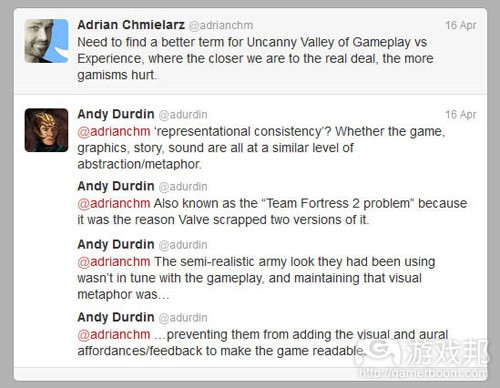
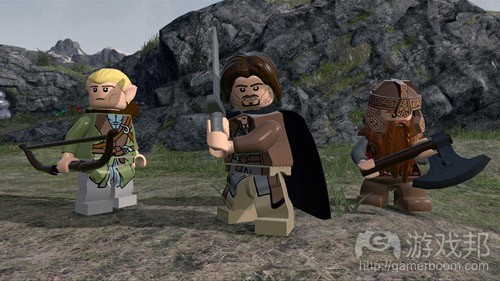
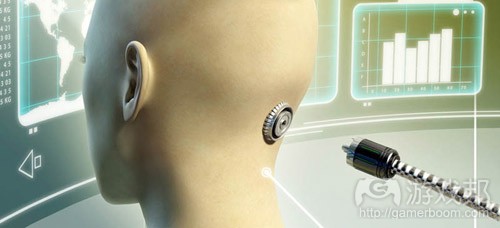
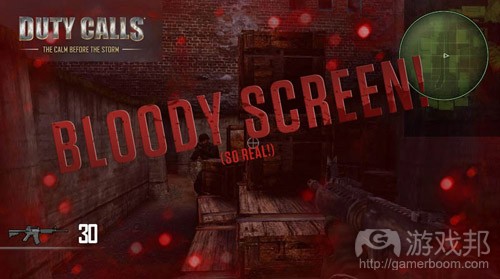

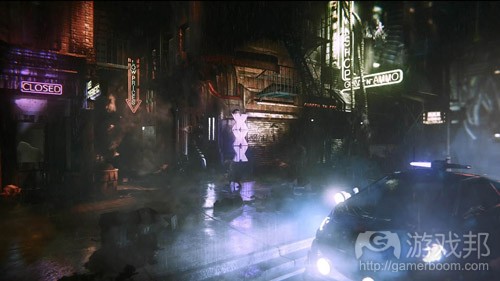














 闽公网安备35020302001549号
闽公网安备35020302001549号